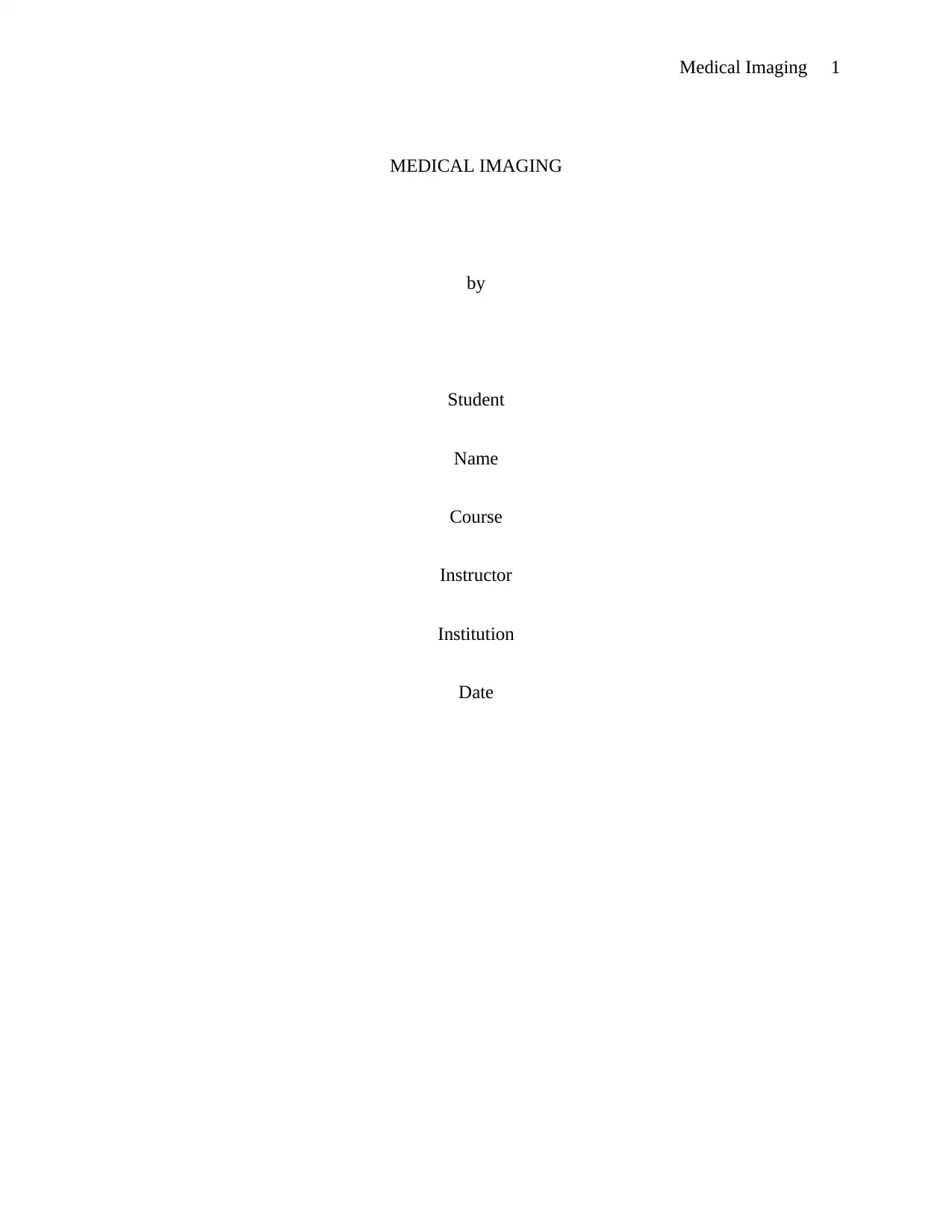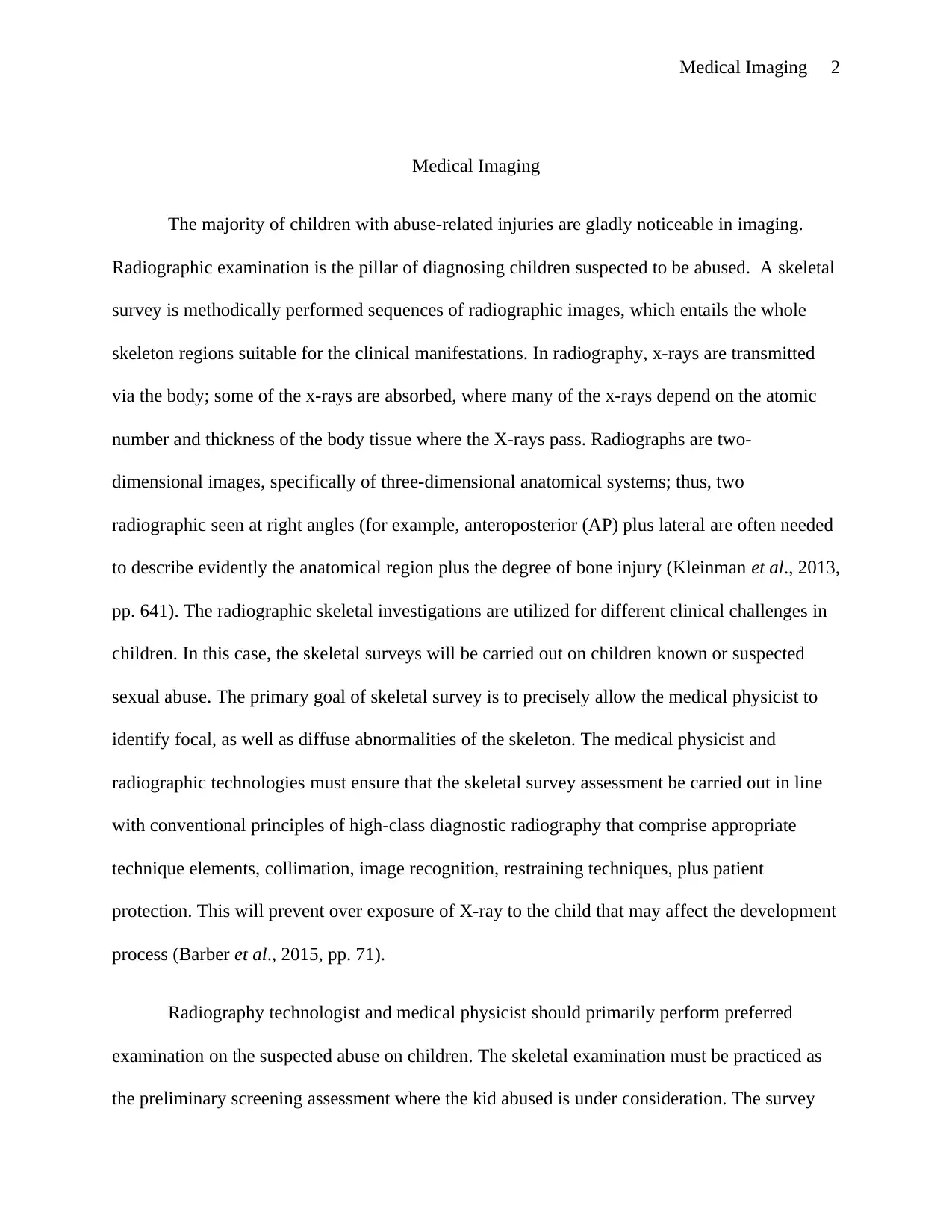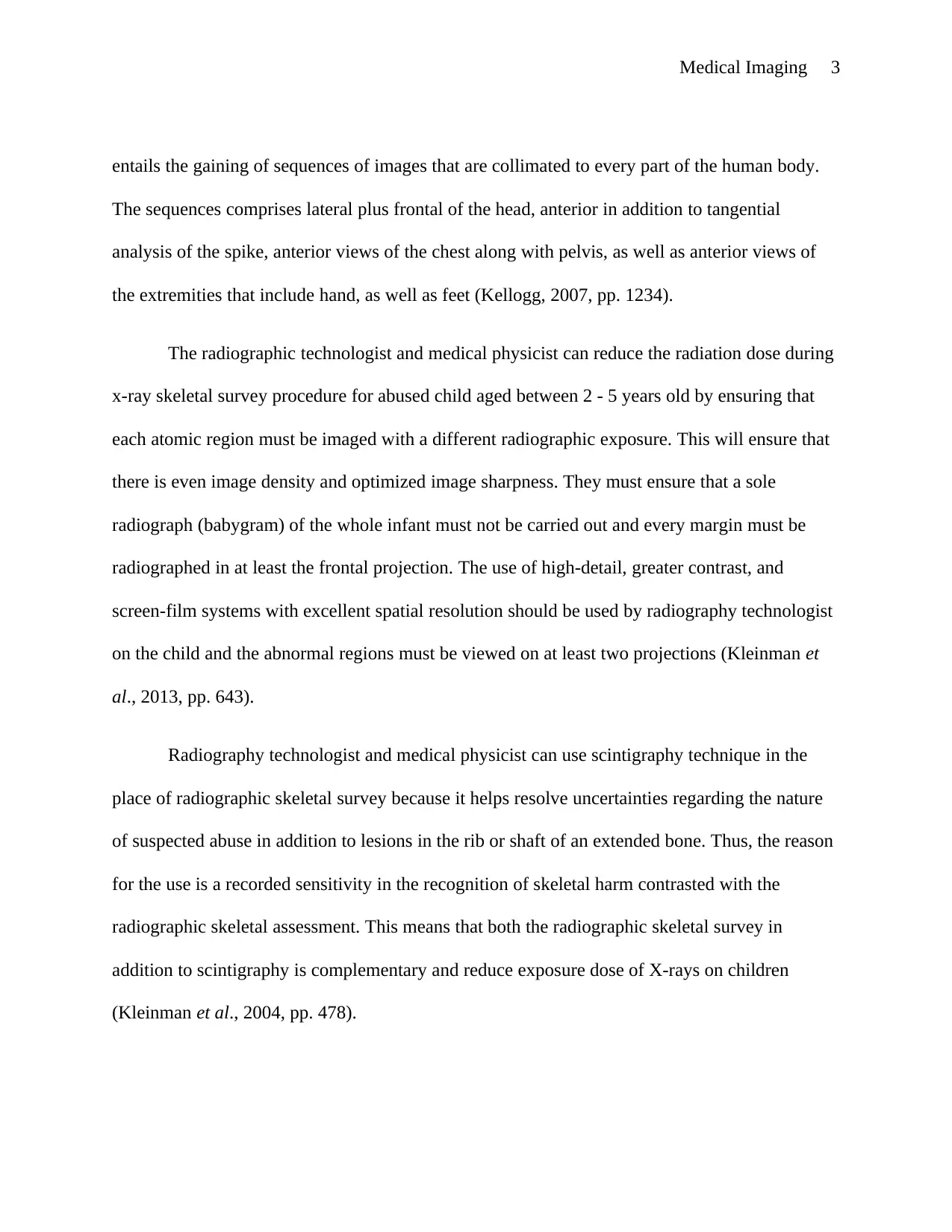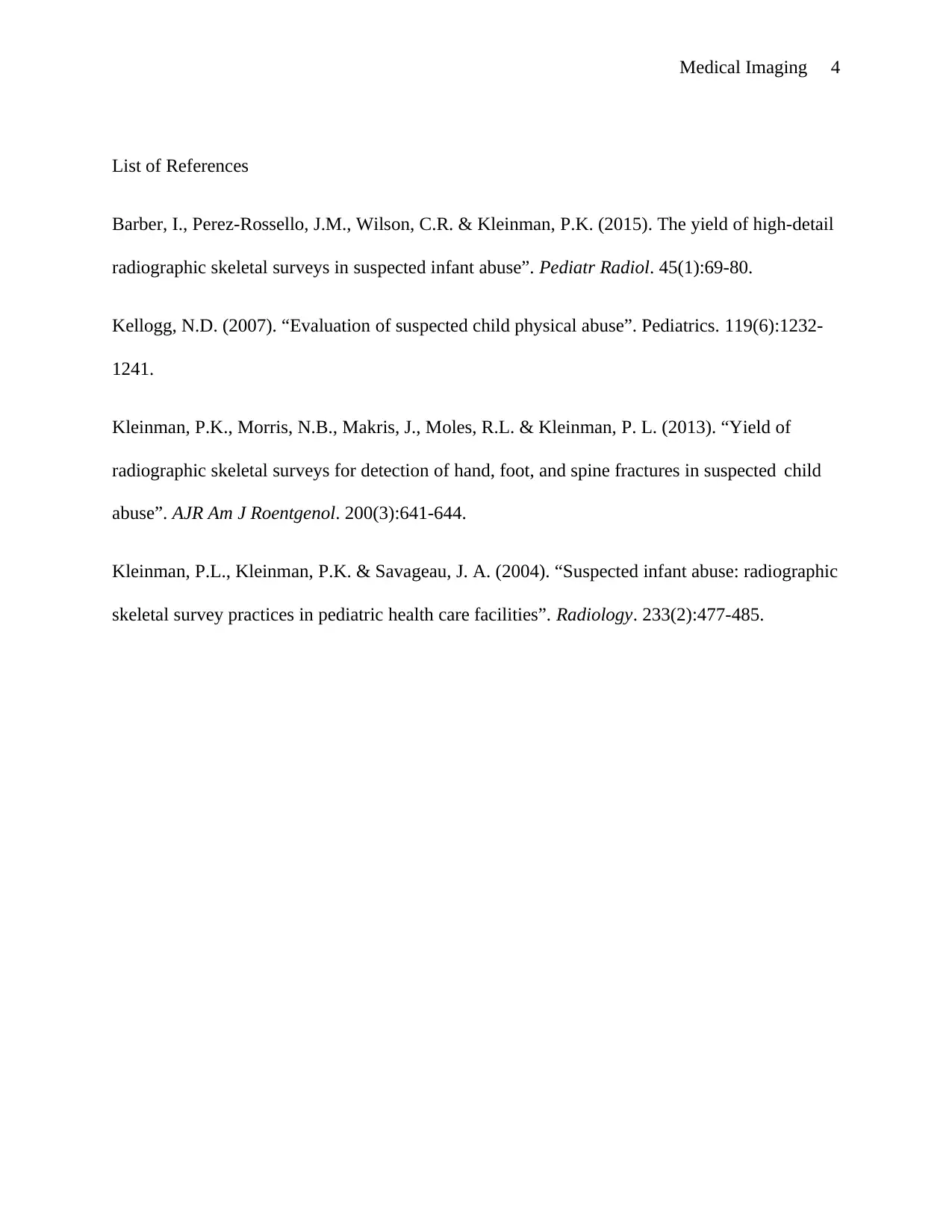Medical Imaging: Radiographic Skeletal Surveys for Child Abuse Cases
VerifiedAdded on 2023/04/23
|4
|811
|300
Report
AI Summary
This report provides an overview of medical imaging techniques, specifically focusing on radiographic skeletal surveys used in the diagnosis of suspected child abuse. It emphasizes the importance of radiographic examination as a primary diagnostic tool, detailing the process of skeletal surveys and the need for two radiographic views to accurately assess anatomical regions and bone injuries. The report highlights the roles of medical physicists and radiographic technologists in ensuring high-quality diagnostic radiography, including appropriate techniques, collimation, and patient protection to minimize radiation exposure, especially in children. It also discusses the use of scintigraphy as a complementary technique to reduce X-ray exposure. The report references key studies and guidelines to support the described practices, offering insights into the procedures, techniques, and considerations involved in using medical imaging to evaluate and diagnose child abuse cases.
1 out of 4





![[object Object]](/_next/static/media/star-bottom.7253800d.svg)